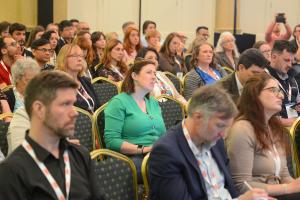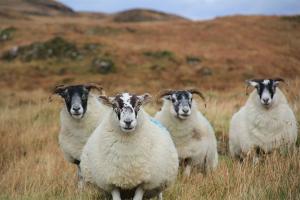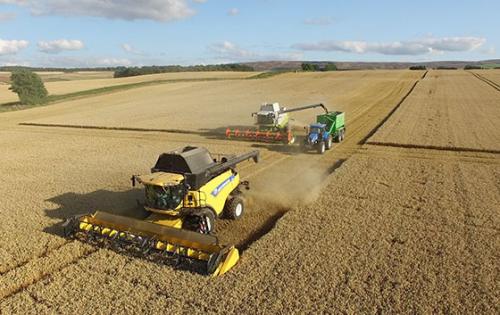
Scotland’s agriculture sector underpins Scotland’s high performing food and drink industry, is at the heart of our rural communities, and provides benefits to wider society. SEFARI provides the research needed for Scotland to improve the efficiency of good food production whilst protecting the environment, rural communities and animal welfare. This is done through developing tools (for example on disease control, welfare and genetics), research, and the capability to think about agriculture in a wider context. We also work with farmers and growers, processors, food companies, health professionals, nutritionists, and economists to find ways to put our research into practice.
Sector Contact

Case Studies
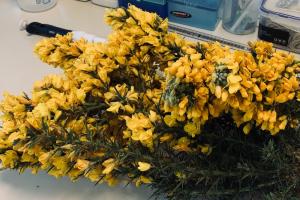
Agriculture bears the brunt of having to reliably supply food, ensure its own economic viability, while complying with environmental concerns. Farming comes under a lot of pressure to deliver produce, despite unfavourable climatic variation, changes in pest behaviour and the control of invasive plants.
In this blog, Ajay Iyer and Wendy Russell consider a different approach and discuss how invasive or “undesirable” plants such as Gorse (Ulex europaeus) could serve as an alternate and sustainable source of protein.

Zoonotic pathogens are microorganisms transmitted by animals, which cause disease and illness in humans. Many of them are foodborne and are commonly associated with farmed animals, or less frequently with wildlife. However, some pathogens are also transmitted into the food-chain indirectly from animals onto plants, via faecal contamination of water used for irrigation or via the soil where the plants grow. If the plants are destined for consumption, e.g., fruit and vegetable crops that are normally consumed raw or minimally processed, this can become a foodborne hazard.
Surprisingly though, there is still a misconception that plants play only a minor role in zoonoses survival and spread, even though fresh-produce accounts for similar numbers of foodborne outbreaks as meat or dairy. At SEFARI our researchers contribute to work in this area and are part of only a relatively small number of researchers in the UK & Ireland who do. In this blog, Dr Nicola Holden discusses how SEFARI research fits into this complex issue, outlines the key risk factors (illustrated with examples) and identifies what questions still need to be addressed.
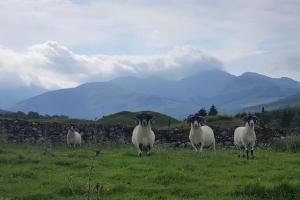
With the pandemic turning our lives upside down, the use of digital communication has accelerated overnight. Webinars, Teams meetings, Digital classrooms, Virtual brainstorming boards, to name but a few. They have all helped in keeping us connected from the safety of our own homes. However, these virtual technologies achieve so much more than simply enabling conversations to continue. They have removed barriers - social, physical, economic, geographical - and in removing these barriers they have made research more accessible.
In this blog, Dr Lorna Cole, discusses the recent creation of a series of virtual tours at five of our leading SEFARI research farms, in a SEFARI Gateway Responsive Opportunity funded project. The tours are readily accessible through the Google Earth platform, giving everyone access to the countryside and allowing us to learn more about the research that is being conducted on SEFARI’s research farms.
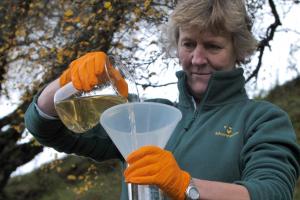
The protozoan parasite Cryptosporidium is a significant cause of diarrhoeal disease in humans and animals in UK and many other countries across the world. Cryptosporidium are highly successful parasites as they can infect many different hosts, multiplying in the gut and then shedding millions of parasite oocysts (eggs) in the faeces, where they can contaminate the environment and are a source of infection for other hosts.
SEFARI research is increasing our understanding of the sources of Cryptosporidium parasites, and the transfer of oocysts from host faecal material through the environment to water courses. This work will help with developing strategies to protect water catchments.

The past year has been, and 2021 will undoubtedly remain, challenging for us all. At Gateway we are focussing our efforts on continuing to support the COVID-19 recovery response while maintaining momentum for knowledge exchange partnership working across environment, land, agriculture, food and rural community priorities.
In particular, we are building upon opportunities to accelerate action towards a green recovery, climate and biodiversity action and just transition for net zero emissions. Gateway is supporting these and other key agendas such as health and wellbeing, by providing extensive access to Scottish Government strategic research and expertise through our funded projects which we are also increasingly interlinking projects to maximise the value of evidence and to further enhance stakeholder linkages.
This update follows on from our previous update in June 2020 and outlines our more recent funded projects and activity.

Currently, we are all experiencing unique working conditions, leading us to adapt to new ways of engaging and learning.
In this blog Dr Claire Hardy, who was awarded SEFARI Gateway Responsive Opportunity Funds, explores the use of virtual technology to engage farmers and the agricultural community, helping farmers to experience in-field events safely, flexibly, and remotely.

In this blog, we discuss a new project that is seeking to support and inform farmers (through both research and communications) on how to best promote fair, balanced, and more impactful, positive stories about the livestock industry.
Through a collaborative approach, we can increase public knowledge and understanding on how Scots beef and lamb is produced, leading to a wider and better understanding of the Scottish livestock industry, including the positive benefits of eating safe and nutritious food, alongside the environmental, social and economic benefits that livestock farming can bring.

Eating a nutritious and more environmentally sustainable diet is an increasing priority. Growing and consuming novel crops could form part of the solution.
In this blog, we discuss how we have been working to engage consumers and those connected with the food supply chain with our research on crops such as green pea, fava bean, hemp and buckwheat. A recipe book, video, and networking event (supported by SEFARI Gateway's Responsive Opportunity Fund) have been developed to provide a novel and informed perspective on ‘A Taste of Plants’.
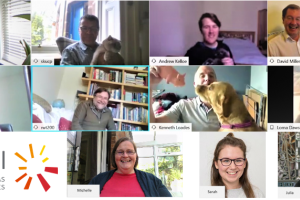
In this blog, we thought we’d let you know the latest developments from SEFARI Gateway, as we continue to work together even though we are currently physically apart.
For us, lockdown has really emphasized our love of nature (on daily walks, in the garden or by virtually meeting each other’s pets, now so much a part of the virtual meeting world!). Gateway’s work itself has been intensive. The strengths of our stakeholder partnerships and an adaptable approach to connecting across knowledge networks has hugely benefitted us and provided new ways to work.

In these current challenging times, those of us lucky enough to have a garden, allotment or even a small amount of space in a window-box might be considering ‘growing our own’ food and wondering what we should plant. With a plethora of mail-order seeds available deciding what to grow can be challenging.
Here we consider the health benefits of eating edible wild plants, highlighted by ongoing SEFARI research.
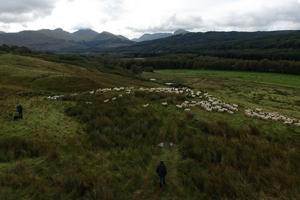
In this blog, Chris Cousens and Craig Watkins (Moredun Research Institute) explain more about a series of webinars they are delivering with the National Sheep Association (NSA) and SRUC. The focus of these webinars is on “iceberg” diseases, those which often go unnoticed or unreported but have significant effects on sheep flocks.

In this blog, Professor Lorna Dawson outlines why soil is so important and how she has been involved in creating a range of online, free to access, educational resources on soils - focussing in particular on the soils of the crofts.
Resources, that can readily be undertaken at home, include a range of practical activities such as cooking, crosswords, creating a wormery, making a composter - as well as suggestions for those interested in learning more about soils, crofting and rural communities.
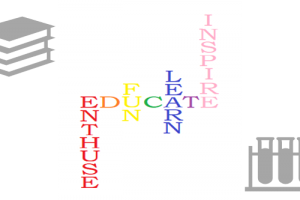
Online educational activities and resources are needed more than ever at the moment to help with home schooling. In this blog, find out how SEFARI is trying to help by making our educational resources more accessible and discover a few of our activities on food, agriculture and the environment that are either available now or are coming very soon.
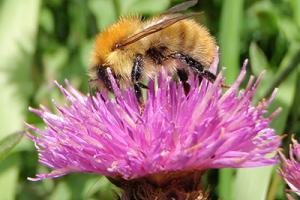
Lorna Cole, SRUC summarises a recently published review she undertook with 21 other pollinator experts across 18 European countries. Insect pollinators continue to decline across Europe despite the Common Agricultural Policy’s increased focus on environmental protection. In response, this group of experts are calling for the improved quality of wildlife habitats through more targeted management and a robust monitoring framework, and a diversity of habitats to meet the resource requirements of our pollinating insects.

In this blog, we are delighted Dr Alison Karley is able to share with us details of her recent Responsive Opportunity project, during which she visited the island of Lismore to discuss intercropping and the benefits it can have for agricultural sustainability.
The SEFARI Gateway Responsive Opportunity Fund is designed to increase the visibility of the invaluable contributions the Strategic Research Programme makes towards sustainable economic growth and improving the lives of people in Scotland and beyond.

Facing current environmental emergencies, governments worldwide have set themselves ambitious targets to reduce greenhouse gas (GHG) emissions at national levels. Scotland is eager to make a pivotal contribution by setting a target of net-zero GHG emissions by 2045 and to reduce emissions by 75% by 2030. This calls for a holistic approach across industry, research, education, government, as well as changing individual behaviour. Increasing the extent of agriculture diversity could be a key component in agriculture’s response towards the mitigation of GHG emissions. In this blog we highlight how the emerging hemp industry has an innovative opportunity to contribute.
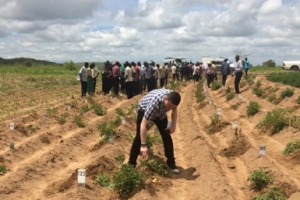
Finding ways to reduce and cope with the impact of climate change is vital to us all. In this blog, SEFARI researchers outline their ongoing work to find new ways to help; firstly, discussing how grasses have an important role in carbon sequestration and then outlining how a better understanding of crop genetics will enable us to cope with climate change and improve food security.
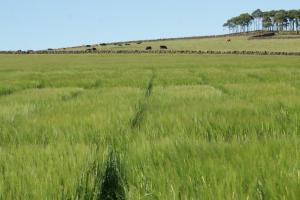
In this blog, Professor Fiona Burnett of SRUC shares her experiences of agronomy (a branch of agricultural science that deals with the study of crops and the soils in which they grow). Fiona discusses integrated and sustainable ways of producing barley with growers who are concerned about the impact that fertiliser and pesticide inputs can have on the carbon footprint of the crop.
Working with growers from across Scotland (main arable areas and remoter areas) has highlighted the very different issues that crop agronomists and growers have had to deal with recently and the decisions that go into producing a sustainable and quality crop for a quality market. In particular, events funded through the Farm Advisory Service Crop Health Activity in Islay, Shetland and East Lothian have illustrated the very different issues faced in a single crop.

We are pleased that Bob Rees, Scotland’s Rural College is able discuss reducing greenhouse gas emissions from cropping systems. This post was originally published by the Scottish Parliament’s Information Centre (SPICe), who commissioned SEFARI to write a series of blogs to stimulate debate on this issue. SEFARI research takes a collaborative approach and looks at this complex and challenging issue from multiple perspectives, including improving animal health, the role of precision agriculture and changing dietary intake to reduce greenhouse gas emissions.
Pagination
Blog
